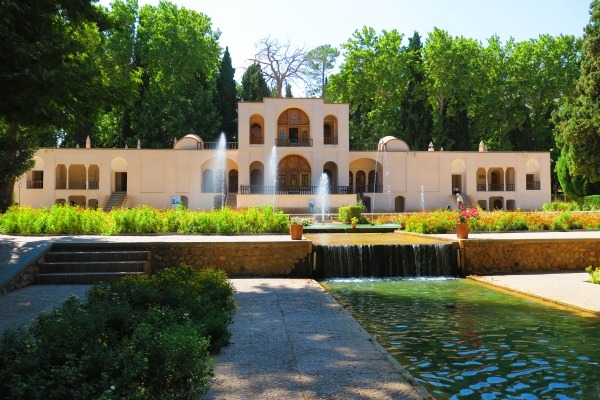Kerman
Kerman is the capital of Kerman province located in central east of Iran and in the border of Lut desert; the hottest place on the earth and the most amazing Iran deserts. Kerman was known as Karmenia a long time ago and is famous for its long history and rich cultural heritage. Mountains, mineral springs, amazing desert, historical monuments, Zoroastrian fire temples make Kerman as one of the most wonderful Iran destinations which attract numerous travelers and adventurers from around the world to experience not only cultural tours but adventure tours in Iran. Kerman was one of the cities along the ancient Silk Road that brought many merchants for trading value commodities and intellectuals for transmission of cultures,

knowledge, ideas, and beliefs. Ardeshir castle, Jamaran township, and Dokhtar castle are the oldest highlights in Kerman. The most important mountains in Kerman province are Hezar with 4501m is the 4th highest peak among Iran mountain peaks.
History of Kerman
Kerman dates back to the 3rd century AD, in the time of Ardashir I the founder of the Sassanian Empire. Kerman was founded by Ardashir I as a defensive outpost which was named Veh-Ardashir. In 642, Arabs attacked and captured the city. Zoroastrian and Kharijites were allowed to thrive in Kerman but in 698 the Kharijites were eliminated and wiped out and by 725 the most population of Kerman were Muslims. In 1271 when Marco Polo the famous Venetian merchant and explorer visited this city it was an important trading emporium that linked the Khorasan province to the Persian Gulf. Kerman was the major producer of Kashmir wool shawls in the eighth century and exported carpets and rugs to Europe during the Safavid era. In fact, Kerman was developed and expanded during the Safavid dynasty.
Topography
Kerman city is a plain surrounded by mountains; Joupar mountain range in the south, Namour and Nasr mountains in the east, Darmanoo and Teez mountains from the north and Bid and Badamoo mountains from the west. The height of Kerman plain from sea level varies from 2100 m in southeast to 1650 m in northwest.
Climates of Kerman
There are factors effect on the climate of Kerman like Lut desert, height, precipitation and distance from the sea which cause an ultra-dry climate in Kerman. Wind is another factor causes different climate in Kerman. There are local and external winds in Kerman which usually are seasonable and dry and decrease moisture and cause dust. The type of buildings is coordinated to climate which during the winter gain temperature and loose it during summer. However, it has different climate for its geographical position. It has hot and humid weather in southwest and so dry in north and northeast.
Attractions of Kerman
Kerman has many natural attractions because of its special geographical position which is ideal for adventure tours in Iran including mountain trekking, ski touring, desert trekking, desert safari, and sightseeing and cultural tour in Iran. The best attractions are Ganjali Khan complex, Ganjali Khan bath, Jabalieh, Shazdeh Garden in Mahan, Jameh mosque, and Fathabad garden.
Ganjali Khan complex belongs to the Safavid dynasty situated in the historical and old part of the city. The complex was built by order of Ganjali Khan and consists of a school, a caravanserai, a mosque, water storage (Ab Anbar), a bathhouse, and a Bazar.
Jabalieh dome also known as Gabri dome located in the city of Kerman. This dome is an octagonal structure containing three floors and a flat dome inspired from the Sassanid era and has been made of stone and bricks. Jabalieh dome predates the 2nd millennium AD and it was probably a Zoroastrian monument.
Ganjali Khan bathhouse is a masterpiece of the Safavid era constructed by a Yazdian architect named “Ostad Mohammad Soltani” between 1596-1621. The fine tile works, beautiful paintings, plaster works, and the entry portal decorated with fantastic paintings attract the attention of travelers to it. Ganjali Khan bathhouse consists of two main parts: a dressing room which has 6 chambers which each one devoted to a social class including: “royal class, clergies, head of tribes, gradness, merchants and rustics and a hot chamber to bath. Ganjali Khan bathhouse has been converted to an anthropology museum in 1971
Rayen castle locally referred to as arg-e Rayen, is an adobe castle located in Rayen town in the south of Kerman province and lies on the foothills of Hezar Mountains, the 4th highest mountain in Iran. It is a medieval mudbrick very similar to Bam citadel and a representative example of a deserted citadel. It is the second biggest earthen fortress after Bam citadel in Kerman province and dates back to the Sassanid era. The presence of a waterfall in Rayen city makes it more attractive and pleasant and scenic to visit.
Bam citadel is locally known as arg-e Bam located in a desert area in the southeast of Iran and lies 1,060 m above sea level. This historical citadel dates back to the Achaemenid dynasty approximately between the 6th to 4th centuries BC. In its heyday, it was an important trade center for being located in the junction of trade routes and famous for producing silk and cotton garments. Arg-e Bam was the biggest adobe citadel in the world before destroying of the earthquake in 2003.
Shazdeh Garden of Mahan means Prince’s Garden located in the city of Mahan is a fine example of Persian gardens in ancient times. Shazdeh Garden was built in 1850 during the Qajar dynasty in 5.5 hectares in rectangular shape and surrounded by walls. It consists of an entrance and a gate at the lower side and a two-floor residential building on the upper side. The distance between the entrance and the residential building is lined by water fountains. It is inscribed in UNESCO World Heritage Sites in June 2011 under the title of Persian Gardens.
